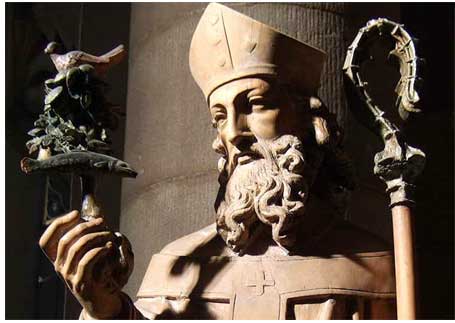| This Week’s Topic… | |||

Best viewed in
|
Saint Mungo
In the fictional world of Harry Potter, Saint Mungo is the patron of St Mungo's Hospital for Magical Maladies and Injuries. In the 'Life of Saint Mungo', he performed four religious miracles in Glasgow. The following verse is used to remember Mungo's four miracles Here is the bird that never flew Here is the tree that never grew Here is the bell that never rang Here is the fish that never swam The verses refer to the following: · The Bird — Mungo restored life to the pet robin of Saint Serf, which had been killed by some of his fellow classmates, hoping to blame him for its death. · The Tree — Mungo had been left in charge of a fire in Saint Serf's monastery. He fell asleep and the fire went out. Taking branches from a tree, he restarted the fire. · The Bell — the bell is thought to have been brought by Mungo from Rome. It was said to have been used in services and to mourn the deceased. The original bell no longer exists, and a replacement, created in the 1640s, is now on display in Glasgow. · The Fish — refers to the story about Queen Languoreth of Strathclyde who was suspected of infidelity by her husband. King Riderch demanded to see her ring, which he claimed she had given to her lover. In reality the King had thrown it into the River Clyde. Faced with execution she appealed for help to Mungo, who ordered a messenger to catch a fish in the river. On opening the fish, the ring was miraculously found inside, which allowed the Queen to clear her name. (This story may be confused with an almost identical one concerning King Maelgwn of Gwynedd and Saint Asaph.) |
||
